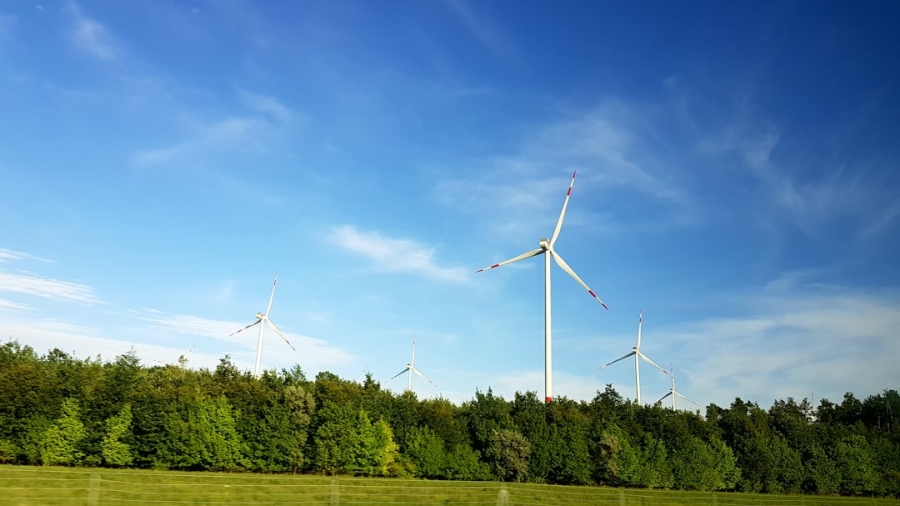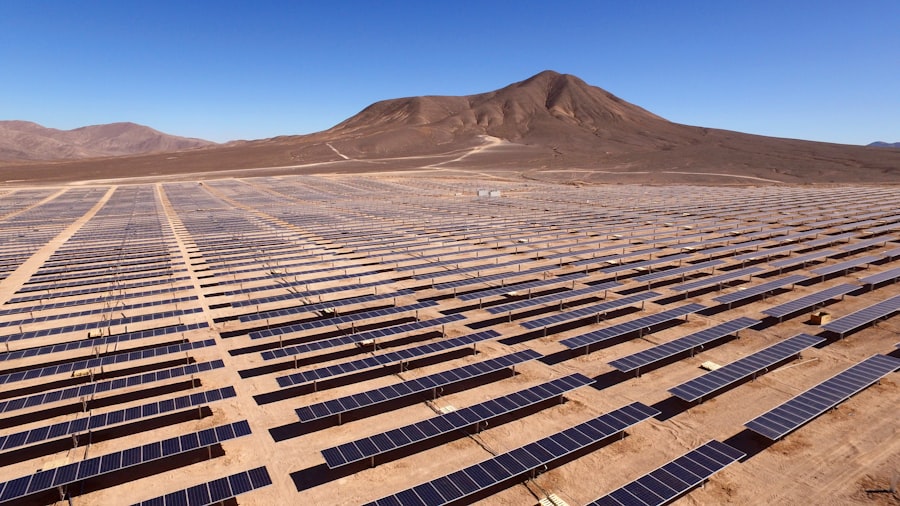The intersection of artificial intelligence (AI) and climate change represents one of the most promising frontiers in the quest for sustainable solutions to one of humanity’s most pressing challenges. As the world grapples with the escalating impacts of climate change, from rising sea levels to extreme weather events, the need for innovative approaches to mitigate these effects has never been more urgent. AI, with its capacity for processing vast amounts of data and identifying patterns that elude human analysis, offers a powerful tool for understanding and addressing the complexities of climate dynamics.
By harnessing AI technologies, researchers and policymakers can gain deeper insights into climate systems, enabling them to devise more effective strategies for both mitigation and adaptation. Moreover, the application of AI in climate science is not merely a theoretical exercise; it is already yielding tangible results across various sectors. From agriculture to urban planning, AI is being employed to optimize resource use, enhance predictive capabilities, and foster resilience against climate-related disruptions.
As we delve deeper into the multifaceted role of AI in combating climate change, it becomes evident that this technology is not just an auxiliary tool but a central player in the global effort to create a sustainable future. The potential for AI to revolutionize our approach to environmental challenges is immense, and understanding its applications is crucial for leveraging its full capabilities in the fight against climate change.
Key Takeaways
- AI has the potential to revolutionize the fight against climate change by providing valuable insights and solutions.
- AI can monitor and predict climate patterns more accurately and efficiently than traditional methods, helping to anticipate and prepare for extreme weather events.
- By optimizing energy usage and efficiency, AI can help reduce carbon emissions and minimize the impact of human activities on the environment.
- AI can enhance the development of renewable energy sources by improving efficiency and identifying new opportunities for sustainable energy production.
- AI can improve climate change modeling and analysis, providing policymakers with better data to make informed decisions and develop effective strategies.
- AI can help manage and mitigate natural disasters by providing early warning systems and coordinating emergency responses.
- Encouraging sustainable practices and behavior change is essential in the fight against climate change, and AI can play a role in promoting and facilitating these changes.
Monitoring and Predicting Climate Patterns
Revolutionizing Climate Science with AI
One of the most significant contributions of Artificial Intelligence (AI) to climate science lies in its ability to monitor and predict climate patterns with unprecedented accuracy. Traditional methods of climate observation often rely on manual data collection and analysis, which can be time-consuming and prone to human error. In contrast, AI algorithms can process vast datasets from satellites, weather stations, and ocean buoys in real-time, allowing for a more comprehensive understanding of climate dynamics.
Uncovering Hidden Trends and Anomalies
Machine learning models can identify trends and anomalies in climate data that may not be immediately apparent, providing scientists with valuable insights into phenomena such as El Niño or the melting of polar ice caps. Furthermore, AI’s predictive capabilities extend beyond mere observation; they enable proactive measures to be taken in response to anticipated climate events. For instance, advanced algorithms can forecast extreme weather conditions, such as hurricanes or droughts, with greater precision than traditional models.
Enhancing Disaster Preparedness and Response
This predictive power is crucial for disaster preparedness and response, allowing communities to implement timely interventions that can save lives and reduce economic losses. By integrating AI into climate monitoring systems, we can enhance our ability to anticipate changes in the environment and respond effectively, ultimately fostering greater resilience in the face of climate change.
Optimizing Energy Usage and Efficiency
The optimization of energy usage and efficiency is another critical area where AI is making significant strides in combating climate change. As global energy consumption continues to rise, the need for smarter energy management systems has become increasingly apparent. AI technologies can analyze consumption patterns in real-time, enabling businesses and households to make informed decisions about their energy use.
For example, smart grids powered by AI can dynamically adjust energy distribution based on demand, reducing waste and ensuring that renewable energy sources are utilized effectively. In addition to optimizing energy consumption at the micro level, AI can also play a pivotal role in enhancing energy efficiency on a macro scale. By analyzing data from various sectors—such as transportation, manufacturing, and residential energy use—AI can identify opportunities for reducing carbon footprints across entire industries.
Predictive maintenance powered by AI can help companies minimize downtime and energy waste by anticipating equipment failures before they occur. As organizations increasingly adopt AI-driven solutions for energy management, the potential for significant reductions in greenhouse gas emissions becomes more attainable, paving the way for a more sustainable energy future.
Enhancing Renewable Energy Development
The transition to renewable energy sources is essential for mitigating climate change, and AI is poised to accelerate this shift significantly. One of the primary challenges in renewable energy development is the intermittent nature of sources like solar and wind power. AI can help address this issue by improving forecasting models that predict energy generation based on weather patterns.
By accurately predicting when renewable energy sources will be most productive, grid operators can better manage supply and demand, ensuring a stable energy supply while minimizing reliance on fossil fuels. Moreover, AI can facilitate the optimization of renewable energy infrastructure itself. For instance, machine learning algorithms can analyze geographical data to identify optimal locations for wind farms or solar installations based on factors such as sunlight exposure and wind patterns.
Additionally, AI can enhance the efficiency of energy storage systems by predicting usage patterns and optimizing charging cycles. As we continue to invest in renewable energy technologies, the integration of AI will be crucial in maximizing their potential and ensuring a smooth transition away from carbon-intensive energy sources.
Improving Climate Change Modeling and Analysis
The complexity of climate systems necessitates sophisticated modeling techniques to understand their behavior accurately. Traditional climate models often struggle with the intricacies of interactions between various environmental factors. However, AI has emerged as a game-changer in this domain by enabling more nuanced simulations that account for a broader range of variables.
Machine learning algorithms can analyze historical climate data to identify correlations and causal relationships that inform more accurate predictive models. This enhanced modeling capability allows scientists to explore various scenarios and assess the potential impacts of different policy decisions on future climate outcomes. Furthermore, AI-driven analysis can facilitate real-time adjustments to climate models based on new data inputs.
As our understanding of climate systems evolves, so too must our modeling approaches. The adaptability of AI allows researchers to refine their models continuously, incorporating new findings and improving their predictive accuracy over time. This iterative process is vital for developing effective strategies for climate mitigation and adaptation, as it enables policymakers to make informed decisions based on the most current scientific knowledge available.
Managing and Mitigating Natural Disasters
Climate Change and Disaster Management
Natural disasters exacerbated by climate change pose significant threats to communities worldwide, making effective management and mitigation strategies essential. AI technologies are increasingly being employed to enhance disaster response efforts by providing real-time data analysis and predictive modeling capabilities.
Enhancing Disaster Response with AI
For instance, machine learning algorithms can analyze satellite imagery and social media feeds to assess damage in affected areas quickly. This rapid assessment allows emergency responders to allocate resources more effectively and prioritize areas in greatest need of assistance.
AI in Disaster Preparedness
In addition to improving response efforts during disasters, AI can also play a crucial role in disaster preparedness. By analyzing historical data on natural disasters—such as hurricanes, floods, or wildfires—AI can identify patterns that inform risk assessments and early warning systems. These predictive capabilities enable communities to implement proactive measures that reduce vulnerability and enhance resilience against future events.
The Future of Disaster Management
As we continue to face an increasing frequency of climate-related disasters, leveraging AI for both response and preparedness will be vital in safeguarding lives and minimizing economic losses.
Encouraging Sustainable Practices and Behavior Change
Finally, one of the most profound impacts of AI on climate change may lie in its ability to influence individual behavior and promote sustainable practices at a societal level. Through personalized recommendations powered by AI algorithms, individuals can receive tailored suggestions on how to reduce their carbon footprints based on their unique lifestyles and consumption patterns. For example, smart home technologies can provide insights into energy usage habits, encouraging users to adopt more efficient practices such as adjusting thermostat settings or reducing water consumption.
Moreover, AI-driven platforms can facilitate community engagement around sustainability initiatives by fostering collaboration among individuals and organizations committed to environmental stewardship. Social media campaigns powered by AI analytics can identify key influencers within communities who can drive awareness and motivate collective action toward sustainability goals. By harnessing the power of AI to promote behavior change at both individual and community levels, we can cultivate a culture of sustainability that empowers people to take meaningful action against climate change.
In conclusion, the integration of artificial intelligence into our efforts to combat climate change holds immense potential across various domains—from monitoring climate patterns to optimizing energy usage and enhancing disaster response capabilities. As we continue to explore innovative applications of AI in addressing environmental challenges, it is crucial that we remain mindful of ethical considerations and ensure that these technologies are deployed equitably and responsibly. By embracing the transformative power of AI while fostering collaboration among stakeholders at all levels, we can pave the way for a more sustainable future that prioritizes both environmental health and social equity.
While exploring the potential of AI in addressing environmental issues, it’s also crucial to consider the role of technology in enhancing our daily operations and communications. An interesting read that complements the discussion on AI and climate change is an article about the best screen recording software of 2023. This software not only aids in efficient communication and training but also promotes remote work, which can significantly reduce carbon footprints by cutting down on commuting. For more insights, you can read the full article here.
FAQs
What is AI?
AI, or artificial intelligence, refers to the simulation of human intelligence in machines that are programmed to think and act like humans. This includes tasks such as learning, problem-solving, and decision-making.
How can AI help combat climate change?
AI can help combat climate change by analyzing large amounts of data to identify patterns and trends, optimizing energy usage, improving forecasting of extreme weather events, and developing more efficient and sustainable solutions for industries such as transportation and agriculture.
What are some specific examples of how AI is being used to address climate change?
Some specific examples of how AI is being used to address climate change include optimizing energy grids to reduce waste, developing smart agriculture techniques to improve crop yields and reduce water usage, and creating predictive models for natural disasters to improve disaster response and preparedness.
What are the potential benefits of using AI to combat climate change?
The potential benefits of using AI to combat climate change include reducing greenhouse gas emissions, improving resource efficiency, enhancing disaster preparedness and response, and developing more sustainable and resilient infrastructure.
Are there any potential drawbacks or challenges associated with using AI to combat climate change?
Some potential drawbacks or challenges associated with using AI to combat climate change include the need for large amounts of data and computing power, potential job displacement in certain industries, and ethical considerations related to privacy and data usage.



